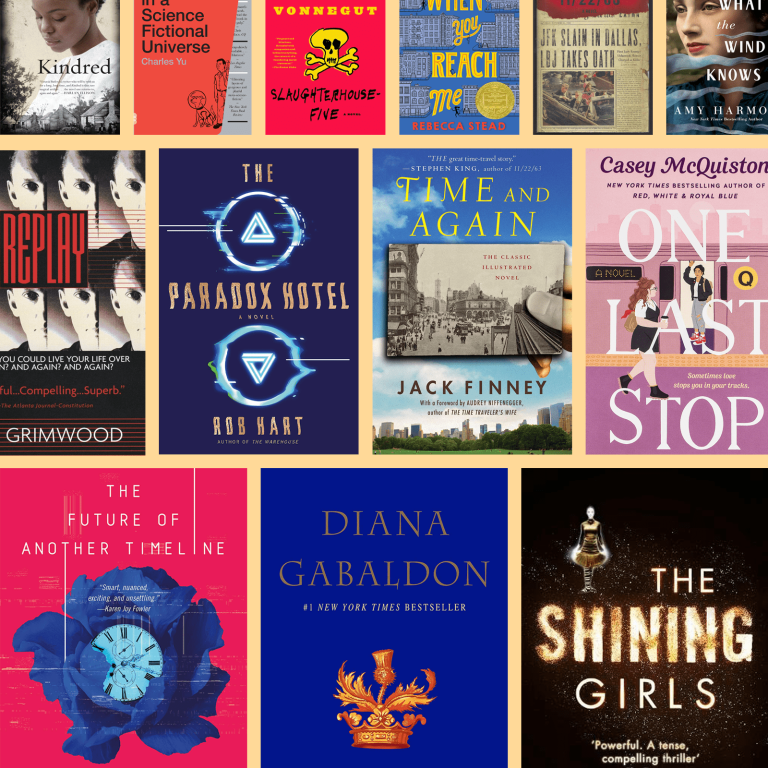The Psychological Torture: Unforgettable Moments Of Dread In Stephen King’s Books
Stephen King, the master of horror, has a knack for creating unforgettable moments of dread that haunt our dreams and send shivers down our spines. His books are a psychological torture chamber, immersing readers in a world of fear and suspense that is impossible to escape. From the eerie clown in “It” to the haunted hotel in “The Shining,” King’s storytelling prowess knows no bounds. In this article, we will delve into the chilling and nerve-wracking moments that have made Stephen King a household name in the realm of horror literature.
When you crack open a Stephen King novel, you know you’re in for a wild ride filled with heart-pounding anticipation and hair-raising suspense. The psychological torment he inflicts upon his characters is nothing short of genius, leaving readers on the edge of their seats, eagerly turning each page. Whether it’s the unearthly creatures that lurk in the shadows or the twisted minds of his protagonists, King has a knack for tapping into our deepest fears and exploiting them to the fullest. Prepare yourself for a journey into the dark recesses of Stephen King’s imagination, where the unforgettable moments of dread await.

The Psychological Torture: Unforgettable Moments of Dread in Stephen King’s Books
Stephen King is a master of psychological horror, often delving into the depths of human fear and torment. His ability to create unforgettable moments of dread in his books has solidified his place as one of the greatest horror writers of all time. In this article, we will explore some of the most chilling and psychologically torturous moments in Stephen King’s books. From haunted hotels to demonic clowns, King has a way of tapping into our deepest fears and leaving an indelible mark on our psyche.
The Haunting of the Overlook Hotel
One of the most iconic and terrifying moments in Stephen King’s repertoire can be found in his novel “The Shining.” The Overlook Hotel serves as the backdrop for a family’s descent into madness. As Jack Torrance, the father and caretaker of the hotel, becomes possessed by its malevolent spirits, the tension and sense of dread steadily build. King expertly crafts a haunting atmosphere, with vivid descriptions of the hotel’s eerie hallways and ghostly apparitions. The psychological torture is palpable as the characters are trapped within the hotel’s walls, forced to confront their deepest fears and darkest secrets.
In this unforgettable moment, Jack’s descent into madness reaches its climax. The hotel’s influence over him becomes overwhelming, and he becomes a puppet in its sinister game. The psychological torture is not only inflicted upon Jack but also on his wife, Wendy, and their young son, Danny. The fear and helplessness they experience are palpable as they navigate the treacherous corridors of the hotel, constantly pursued by the malevolent spirits that reside within. King’s ability to tap into our deepest fears and expose the fragility of the human mind is truly remarkable.
The Dancing Clown: Pennywise
In the novel “It,” Stephen King introduces us to one of his most iconic and terrifying characters: Pennywise the Dancing Clown. This shape-shifting entity preys on the fears of children in the small town of Derry, Maine. Pennywise embodies the epitome of psychological torture, exploiting the vulnerabilities and phobias of his victims. He appears in various forms, feeding on their fear and inflicting unimaginable psychological torment.
One unforgettable moment in “It” occurs when Pennywise lures a young boy named Georgie into the sewer. With his playful demeanor and promises of fun and adventure, Pennywise manipulates Georgie into trusting him. However, as the encounter takes a sinister turn, Pennywise reveals his true form, instilling pure terror in the young boy. This moment showcases King’s ability to create a sense of dread and psychological torment through the manipulation of trust and the unexpected transformation of innocence into horror.
Another chilling moment involving Pennywise occurs during the Losers’ Club’s confrontation with the clown. Each member of the group is forced to face their deepest fears as Pennywise taunts and torments them. The psychological torture they endure is amplified by Pennywise’s sadistic enjoyment of their suffering. King’s masterful storytelling and ability to tap into the primal fears of his readers make these moments unforgettable and deeply unsettling.
The Curse of Carrie White
In “Carrie,” Stephen King explores the themes of isolation, bullying, and the destructive power of repressed emotions. Carrie White, a shy and introverted teenager, possesses telekinetic powers that she struggles to control. As she faces relentless torment from her peers, the psychological torture she endures becomes increasingly unbearable. King expertly depicts the effects of bullying and the toll it takes on Carrie’s mental and emotional well-being.
One unforgettable moment in “Carrie” occurs during the prom scene, where Carrie’s powers are unleashed in a devastating display of destruction. The psychological torment and pent-up rage she has endured throughout the novel culminate in a horrifying act of vengeance. King’s portrayal of Carrie’s transformation from a victim to a powerful force of destruction is both chilling and tragic, highlighting the consequences of unchecked psychological torment.
Another haunting moment in “Carrie” is the infamous locker room scene, where Carrie experiences her first menstrual period and is ruthlessly mocked by her classmates. This moment of humiliation and shame serves as a catalyst for the psychological torture she endures throughout the novel. King’s exploration of the psychological effects of bullying and the power dynamics within high school environments is both thought-provoking and deeply unsettling.
The Psychological Torture of Isolation: “Misery”
In the novel “Misery,” Stephen King delves into the twisted mind of Annie Wilkes, a former nurse and avid fan of a series of novels written by the protagonist, Paul Sheldon. When Paul is injured in a car accident and taken in by Annie, he soon realizes that he is trapped in her secluded home and at her mercy. Annie’s obsession with his novels takes a dark turn as she subjects Paul to a series of sadistic acts, both physical and psychological.
One unforgettable moment of psychological torture in “Misery” occurs when Annie discovers that Paul has been secretly working on a new novel, one that deviates from the storyline she adores. The intense psychological torment Paul endures as Annie enforces her twisted version of justice is both horrifying and captivating. King’s exploration of the power dynamics between captor and captive, as well as the psychological effects of isolation, is masterfully executed.
Another chilling moment in “Misery” is the “hobbling” scene, where Annie breaks Paul’s ankles in a brutal act of torture. This moment showcases King’s ability to depict physical pain intertwined with psychological terror, as Paul’s helplessness and desperation reach their peak. The psychological torture inflicted upon Paul by Annie’s sadistic actions leaves a lasting impact on both the character and the reader.
Overall, Stephen King has a unique talent for creating unforgettable moments of psychological torture in his books. From haunted hotels to demonic clowns and everything in between, his ability to tap into our deepest fears and expose the fragility of the human mind is unparalleled. Through his masterful storytelling and exploration of themes such as isolation, bullying, and the destructive power of repressed emotions, King continues to captivate readers with his chilling tales.
The Psychological Torture: Unforgettable Moments of Dread in Stephen King’s Books
- Stephen King’s books are known for their intense psychological torture, which keeps readers on the edge of their seats.
- King’s ability to create unforgettable moments of dread is what sets him apart as a master of horror.
- Readers can expect to experience a rollercoaster of emotions as they delve into the dark and twisted worlds of King’s imagination.
- From the chilling opening scenes to the bone-chilling climaxes, King knows how to keep readers hooked from start to finish.
- The psychological torment experienced by the characters in King’s books lingers long after the final page is turned, leaving a lasting impact.
Frequently Asked Questions
What are some unforgettable moments of psychological torture in Stephen King’s books?
Stephen King is renowned for his ability to create chilling and psychologically tormenting moments in his books. One unforgettable moment of dread is in the novel “Misery,” when the protagonist, Paul Sheldon, is held captive by his deranged fan, Annie Wilkes. As Annie becomes increasingly unhinged, she inflicts various forms of physical and psychological torture on Paul, leaving readers on the edge of their seats.
Another memorable moment of psychological torture can be found in “The Shining.” Jack Torrance’s descent into madness is a haunting portrayal of psychological torment. As he becomes consumed by the malevolent forces within the Overlook Hotel, readers witness his gradual deterioration, culminating in a terrifying climax that leaves a lasting impact.
How does Stephen King create a sense of dread in his books?
Stephen King is a master of creating a sense of dread in his books through various techniques. One of his techniques is his ability to tap into universal fears and anxieties. Whether it’s the fear of the dark, the unknown, or the loss of control, King skillfully plays on these primal fears to instill a deep sense of dread in his readers.
Additionally, King’s meticulous attention to detail and vivid descriptions contribute to the atmospheric tension in his books. By painting a vivid picture of the settings and characters, he immerses readers in a world where dread lurks around every corner. Through his expert storytelling and pacing, King keeps readers on the edge of their seats, unable to tear themselves away from the psychological torment unfolding on the pages.
What makes the psychological torture in Stephen King’s books so unforgettable?
The psychological torture in Stephen King’s books is unforgettable due to its ability to tap into deep-seated fears and anxieties that resonate with readers on a personal level. King’s characters are often relatable, making their experiences of psychological torment all the more chilling.
Furthermore, King’s skillful portrayal of the human psyche adds an extra layer of complexity to the psychological torture. He delves into the darkest recesses of the human mind, exploring themes of obsession, madness, and the fragility of sanity. By intertwining these psychological elements with supernatural or horror elements, King creates a unique blend of terror that lingers in the minds of readers long after they’ve finished the book.
Which Stephen King book features the most intense psychological torture?
It is difficult to pinpoint a single Stephen King book that features the most intense psychological torture, as he has written numerous novels that delve into the darkest aspects of the human psyche. However, one book that stands out in terms of its portrayal of psychological torment is “It.”
What impact does the psychological torture in Stephen King’s books have on readers?
The psychological torture in Stephen King’s books has a profound impact on readers, leaving them with a lingering sense of unease and a deeper understanding of the human condition. Through his exploration of the darkest corners of the human psyche, King forces readers to confront their own fears and anxieties.
Furthermore, the psychological torture in King’s books serves as a reminder of the fragility of the human mind and the potential for darkness that exists within each of us. It prompts readers to reflect on their own fears and vulnerabilities, creating a lasting impact that extends beyond the pages of the book.
Stephen King’s IT (audiobook pt 1 )
Final Thought: The Unforgettable Dread in Stephen King’s Books
As we reach the end of this exhilarating journey through the psychological torture found within the pages of Stephen King’s books, it’s impossible not to acknowledge the sheer brilliance and impact of his writing. King has mastered the art of crafting unforgettable moments of dread that haunt our minds long after we’ve turned the final page.
Throughout his vast collection of works, King has tapped into our deepest fears and anxieties, delivering spine-chilling experiences that leave us sleepless and trembling. Whether it’s the relentless pursuit of a supernatural entity in “It,” the mind-bending horrors of the Overlook Hotel in “The Shining,” or the unnerving psychological manipulation in “Misery,” King’s ability to immerse us in a world of terror is unparalleled. Each story is crafted with meticulous detail, building suspense and tension until it becomes unbearable.
King’s genius lies not only in his ability to create terrifying scenarios but also in his deep understanding of human psychology. He taps into our vulnerabilities, forcing us to confront our own fears and question our sanity. Through his characters, he explores the darkest corners of the human mind, exposing our deepest desires and the terrifying consequences they can unleash. It is this psychological depth that makes his stories so gripping and resonant, leaving an indelible mark on our souls.
In conclusion, Stephen King’s books are a treasure trove of unforgettable moments of dread. His ability to weave together intricate plots, memorable characters, and psychological terror is a testament to his mastery of the horror genre. Whether you’re a die-hard fan or new to his works, delving into the pages of a Stephen King novel is an experience you won’t soon forget. So brace yourself, for the psychological torture awaits, ready to transport you to a world of unimaginable dread.






